That place just gets more and more impressive each time I go, and I cannot say anything other than the fact that this place sincerely touches something within me. This place is just magical. There is something to see in any direction that you turn, something to learn and every second you are there and you meet some of the most incredible people there.
On this trip there were way too many things that happened that I could start another blog just talking about all the special things and people there. So, to save some time, let me place them in some form of a vastly shortened bulletin format:
My mother of course was there with me, she is my co-pilot and on this trip, she and I spent a lot of time talking about our family, the good, the bad (all families have a ton of both), and we recalled many good stories about my grandfather.
My grandfather and I were not especially close, but we did share a love of music… specifically, accordions. He had absolutely zero musical skills, but he wanted so much to play. In my own collection I own two of his boxes that were passed down to me by his son (my uncle from my mother’s side of the family).
In particular, I recall a nice talk we had one day about his dream instrument, something that he had searched for a long time but since it was very rare in Canada, just had eluded him. I recall how he described it and he then went on to pull out some old cassettes of his and we listened to this accordion… he was talking about a diatonic accordion, one specifically made in the “then” Czechoslovakia in a small factory near Prague. It was called a “Heligonka” due to it’s strong helikon bass and heavy musette tune. He described how once in “the old country” how the nice ones had one "trumpet, and how he almost bought a special one that had two “trumpets” in the bass side, but that the really good ones had the three “trumpets” and how it sounded.
I knew what he was talking about, I was fortunate to have shared a few of these moments with my father while travelling and listening to similar tapes in our van as we travelled and I had seen the pictures in books and later on saw videos on the internet and of course knew the sound from the hundreds of traditional songs the Czechs played and some of the names of the most famous of these people that played these songs both inside and outside our family.
Here is where the story jumps to the present… Paul had in his possession one of those very accordions in his museum, a small personal memory treasure for me… an Anton Hlavāček Heligonka… the REAL thing!
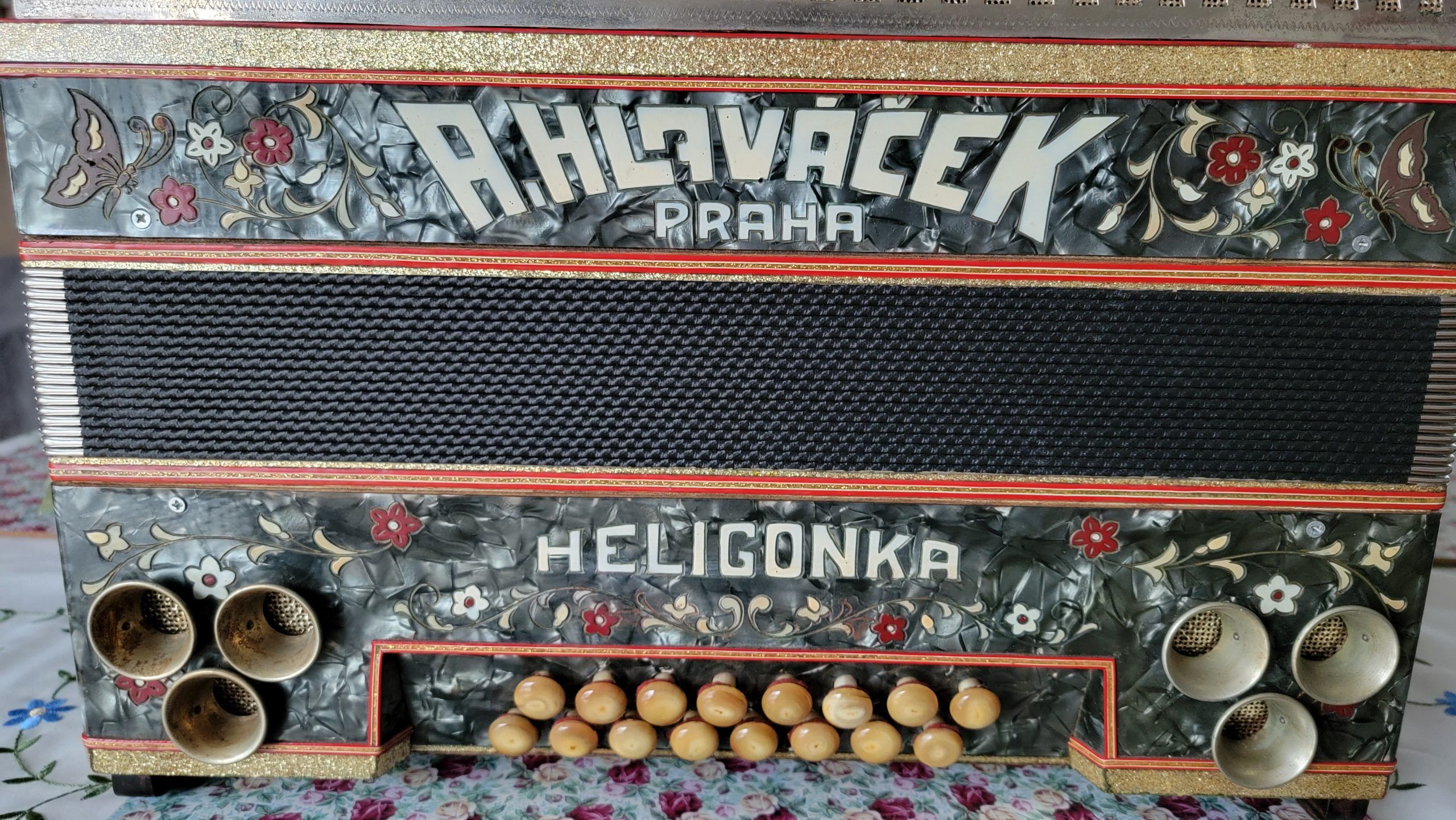
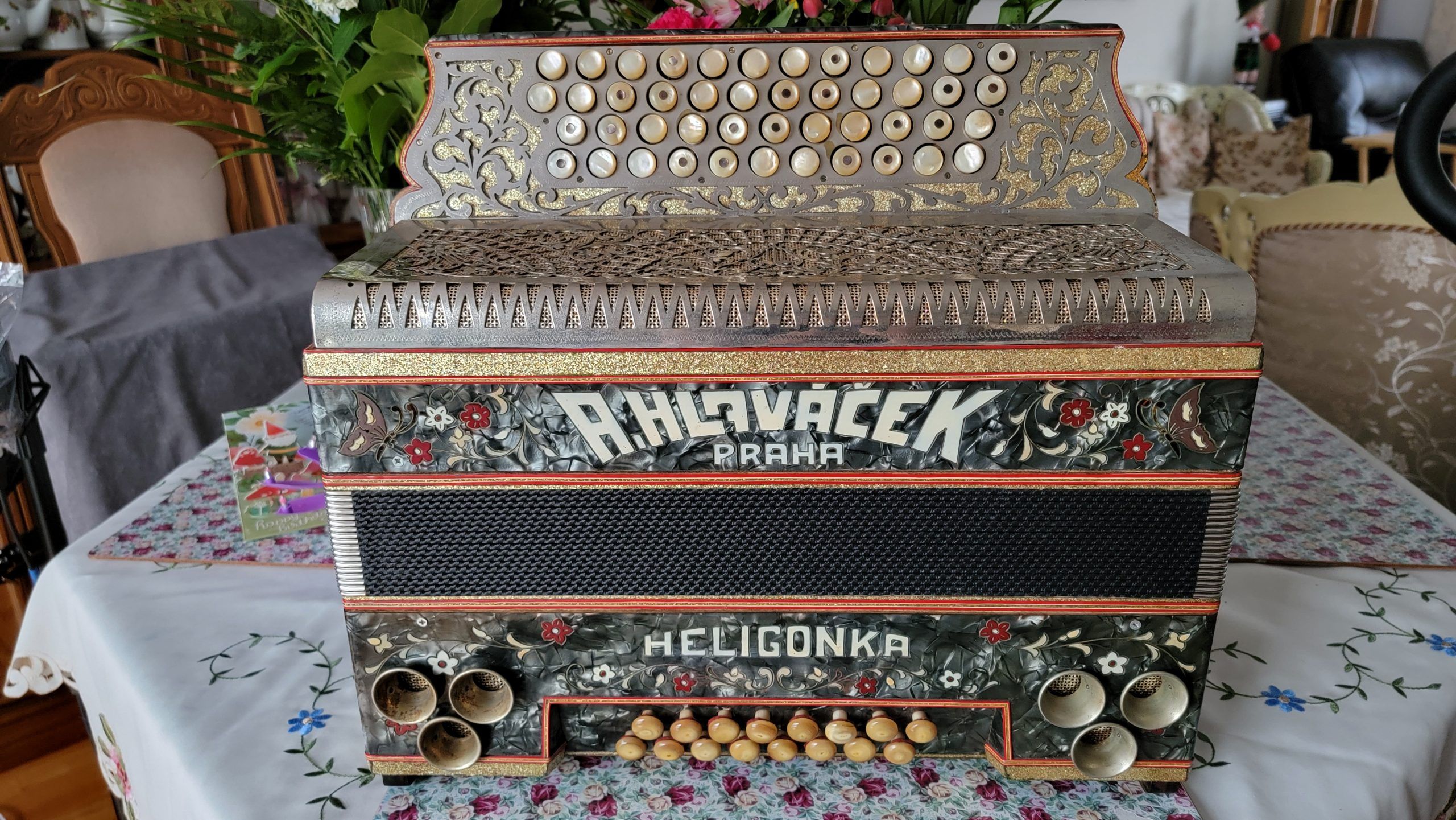
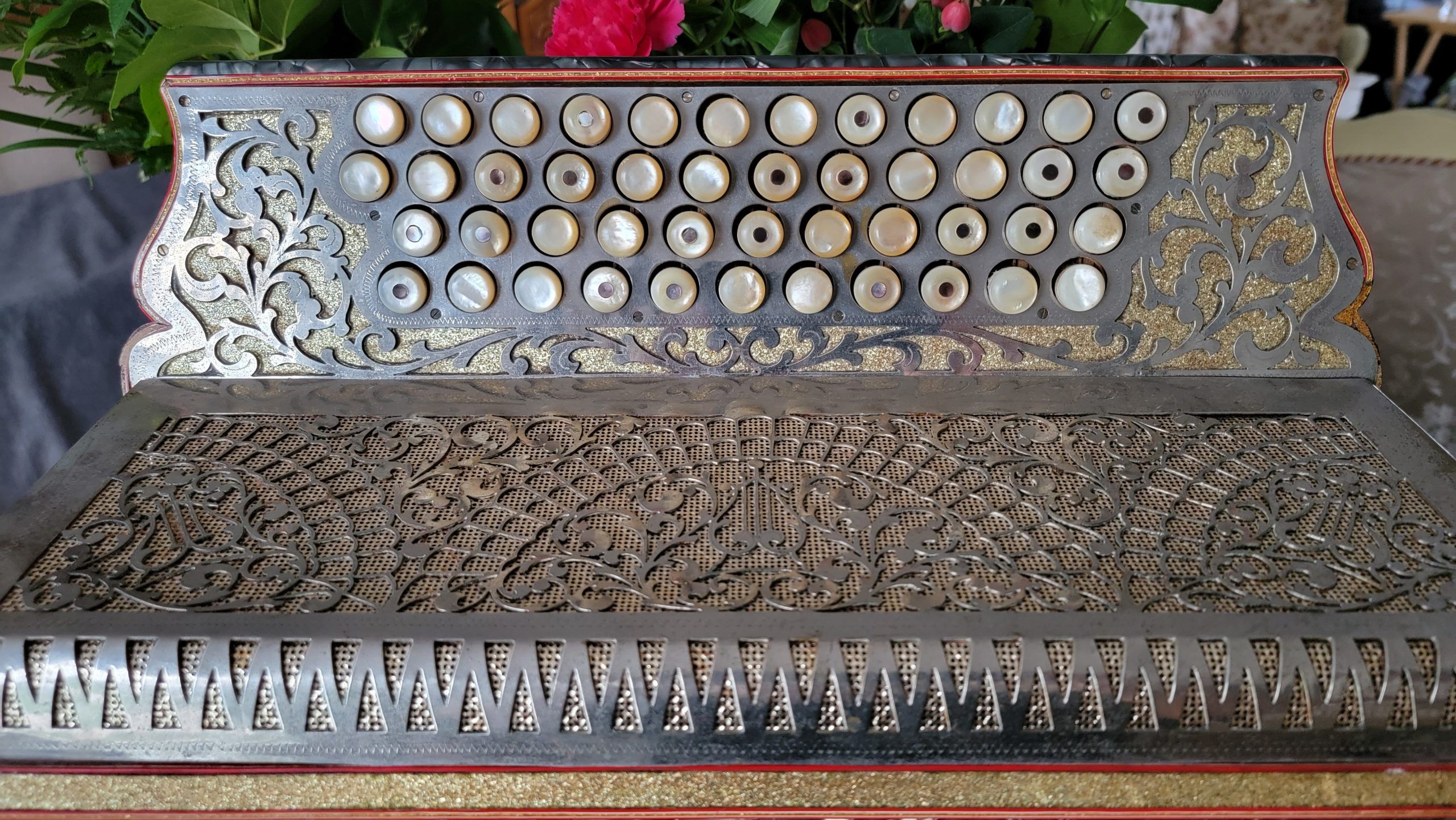
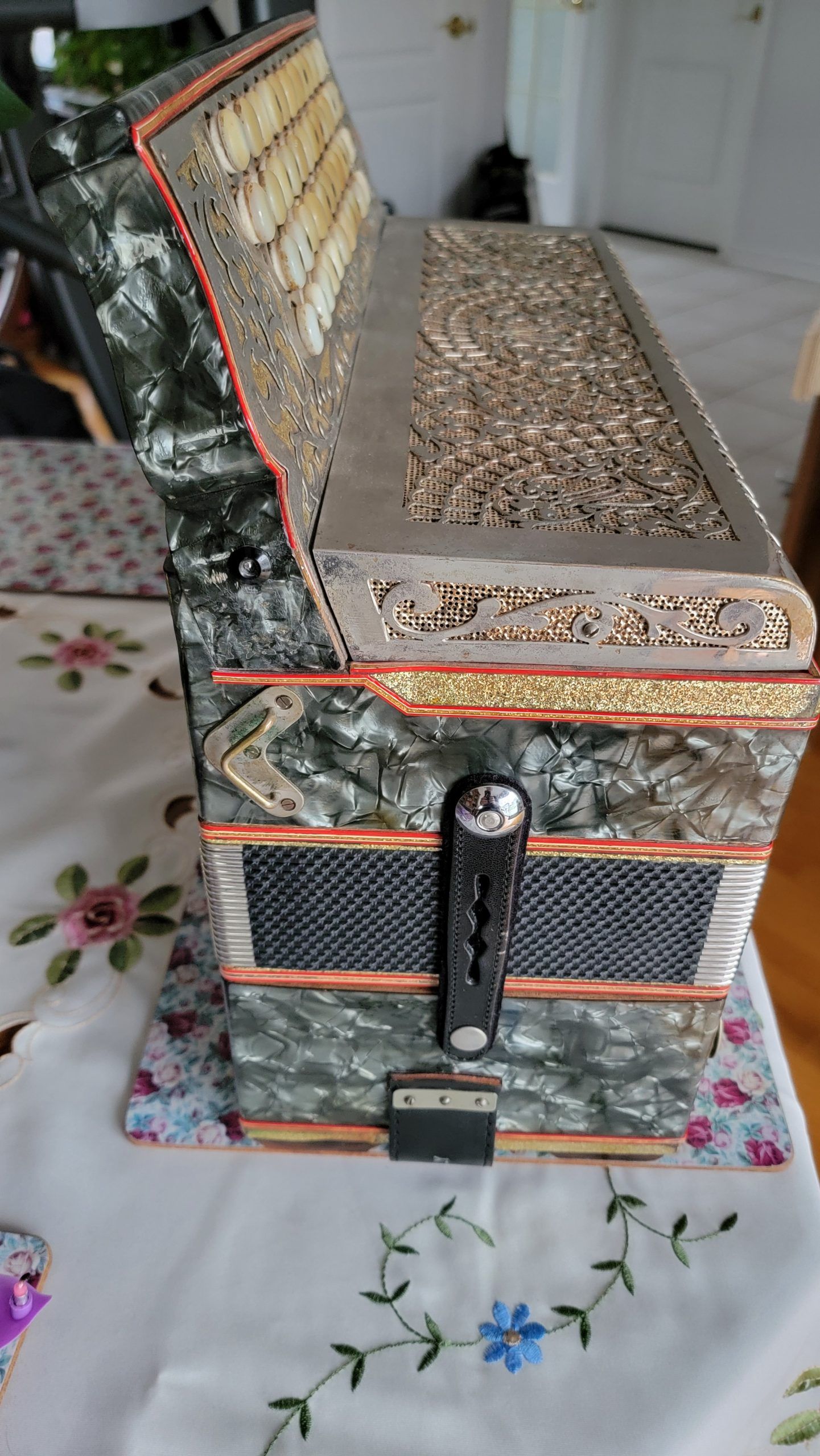
This one looks to be from around the 1930’s and was all there, but needed a lot of work. After getting it home, I can tell that at some time, someone really had a lot of love for this accordion… they gave it modern bellows sstraps, a new (non-original, Italian) bass strap and absolutely new bellows… or at the very least replaced the corners and re-taped it, because they look fresh and new on all 4 sides. However on the bass side, I am willing to bet that some pads fell off as it makes noise without pressing anything when you push some air through it. The bass buttons need adjustment as do some of the treble buttons. But that glorious deep thunder of the helikon bass can be heard when you press a few buttons.
It makes me want to fix this accordion and hear it work properly to it’s aged potential!
Now, here comes the fun part… I cannot play this thing, cannot get a simple tune out of it… I do NOT know where ANY note is on the keyboard and the damn thing changes notes when you push vs pulling (thats the diatonic part in action). This thing is going to drive me a bit nuts, but I would love to learn to play a couple pieces on this accordion… just because… and I will start that research, right after I fix it.
This accordion holds a piece of my past, this is my grandfather’s “Gola”, his epitome of the most wanted accordion he ever saw and wanted to play on because it was the “three trumpet” model, so just to honour his memory, I do plan to fix this one up and make some form of recorded noise on it.
Stay tuned for more as this story goes to the 2nd chapter as I explore the insides of this accordion, and later… as I learn what notes are where and what will be the first tune I get out of it, but for now, this completes this entry.
I will say it again… someone at some time loved this accordion and spent some time with it. The leathers looked like they were fairly new. A few were slightly droopy, but less than perhaps 4-5. The reeds were of a design I have never seen before, but someone lovingly spent some time tuning it. Looking at the reeds, they show a dark blue top, dark blue along the flat length on many. Am I looking at hand-made reeds?
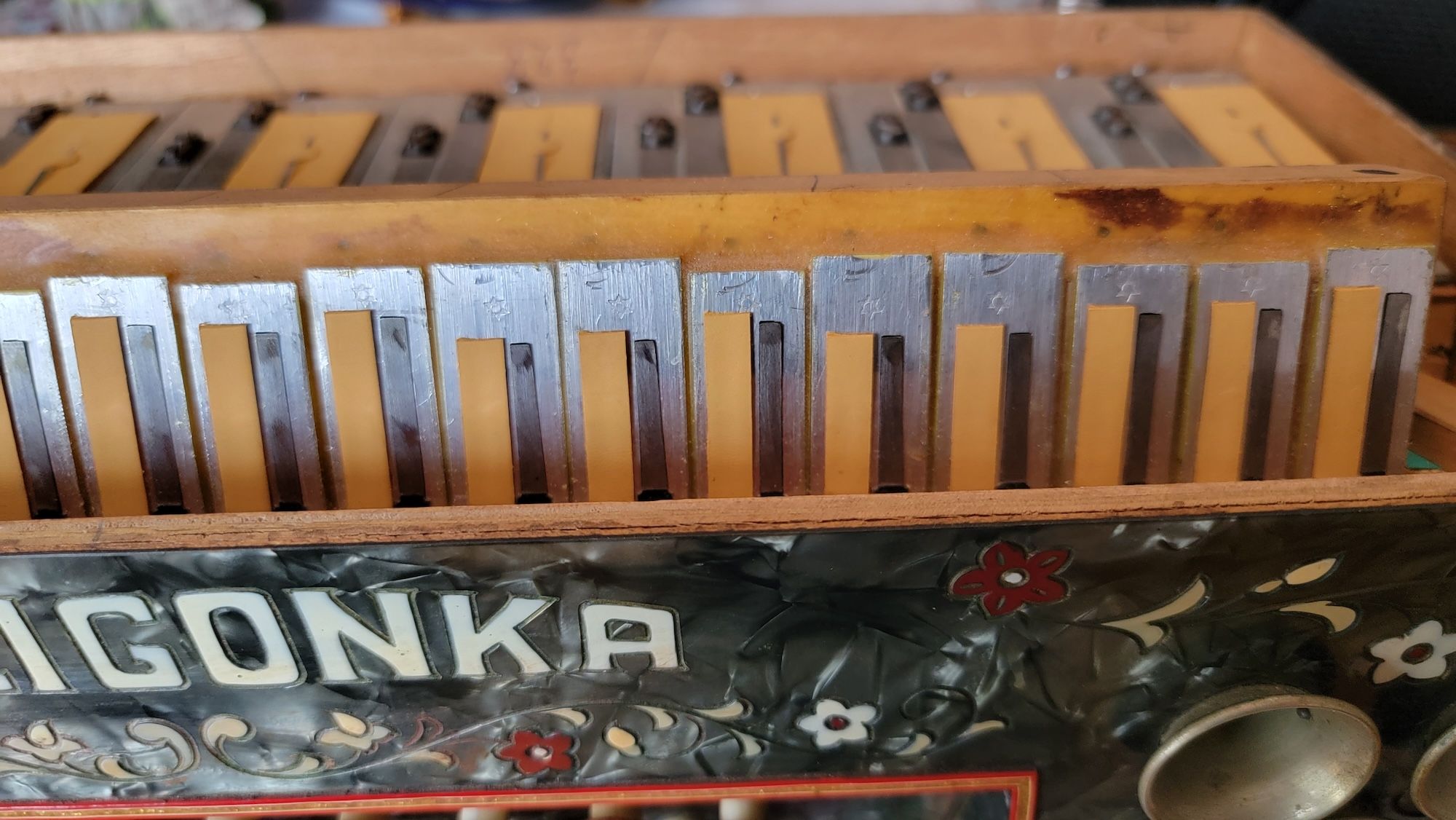
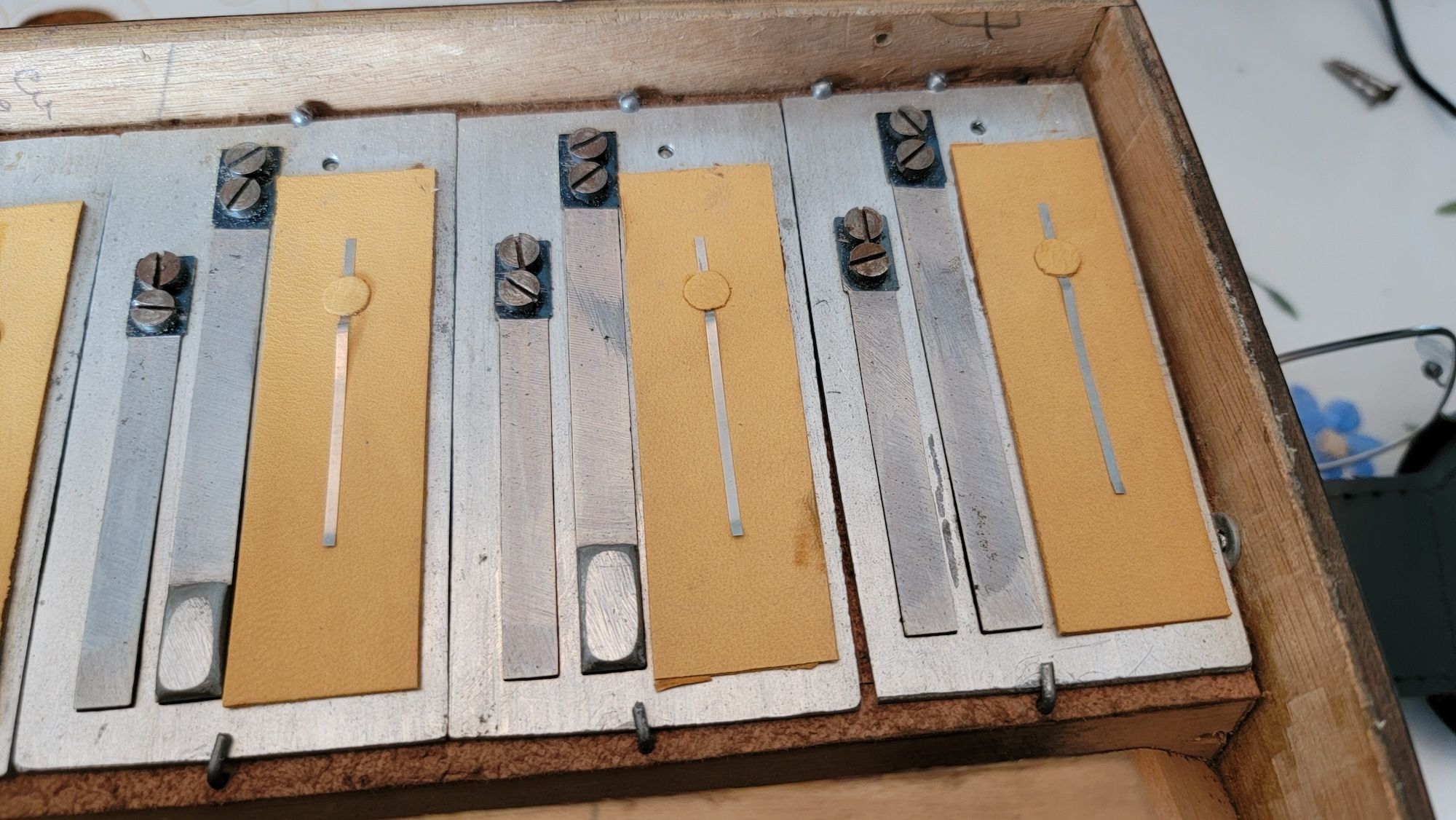
Opening the bass cover, the issue was almost instantly obvious and confirmed my very uneducated guess… a couple of the pads had come loose and fallen off.
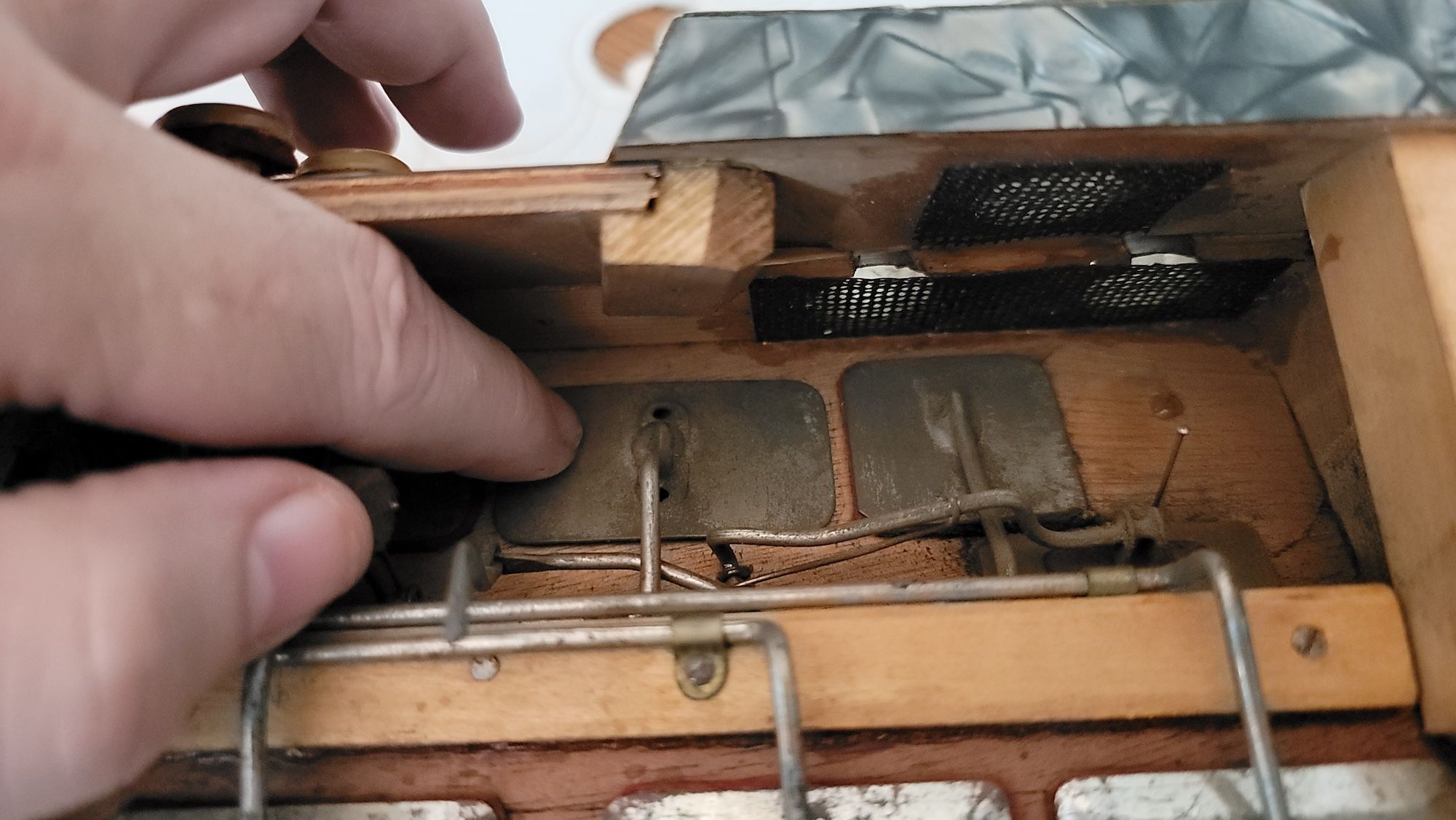
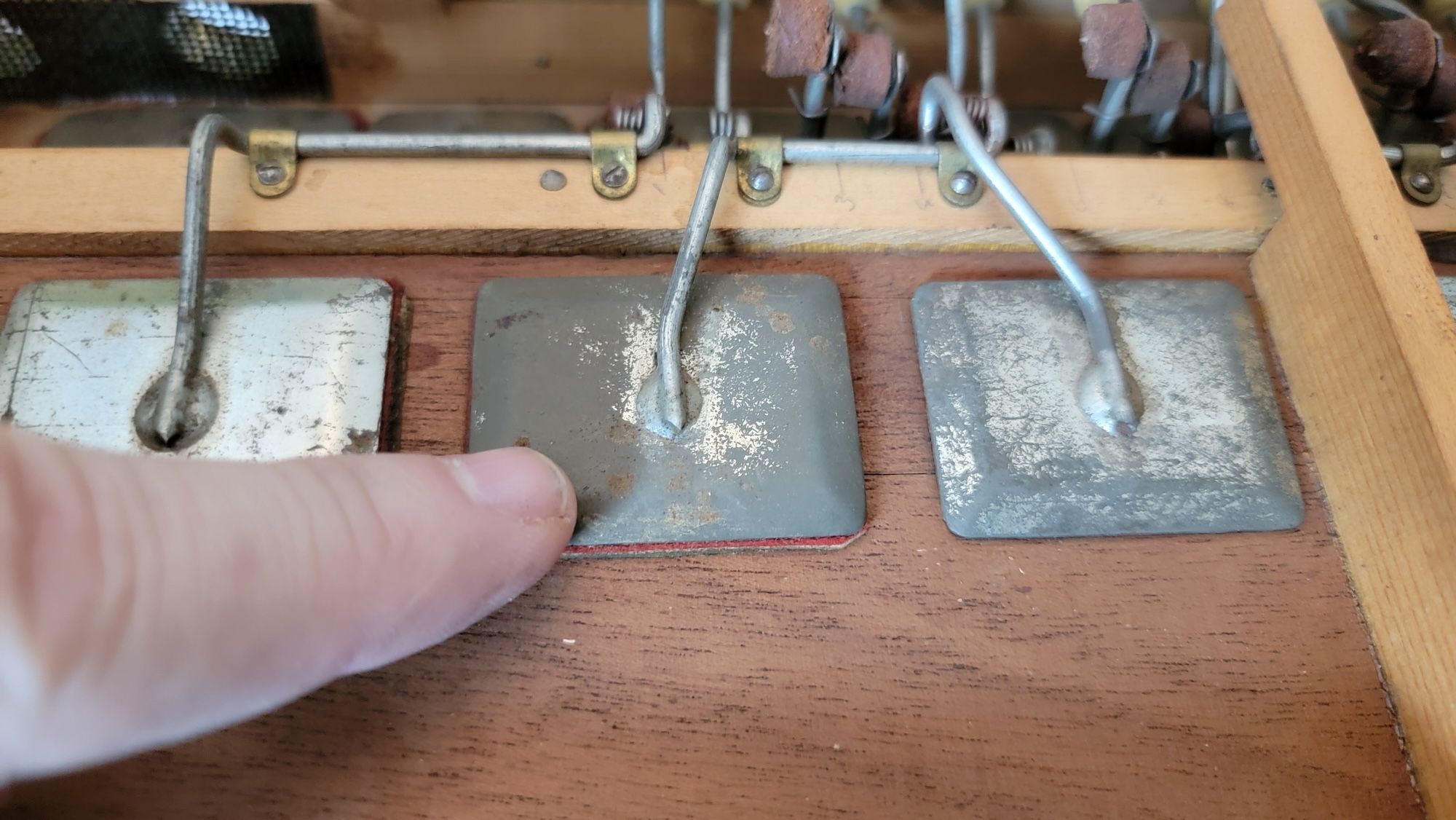
A few minutes and I had them back in place where they belonged. I let it sit for about 30 minutes then gave it a fast test… no more noise from the bass side!
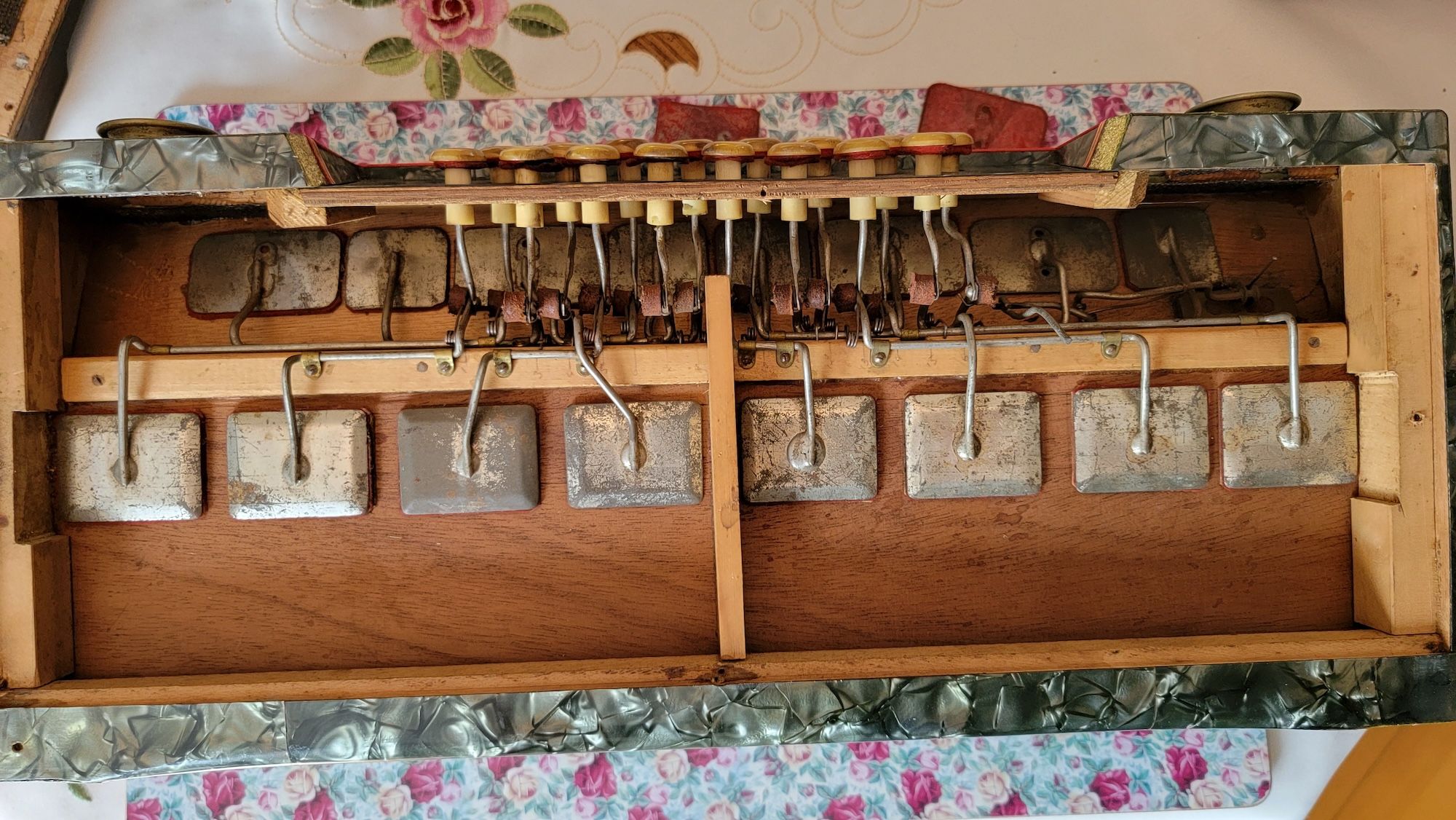
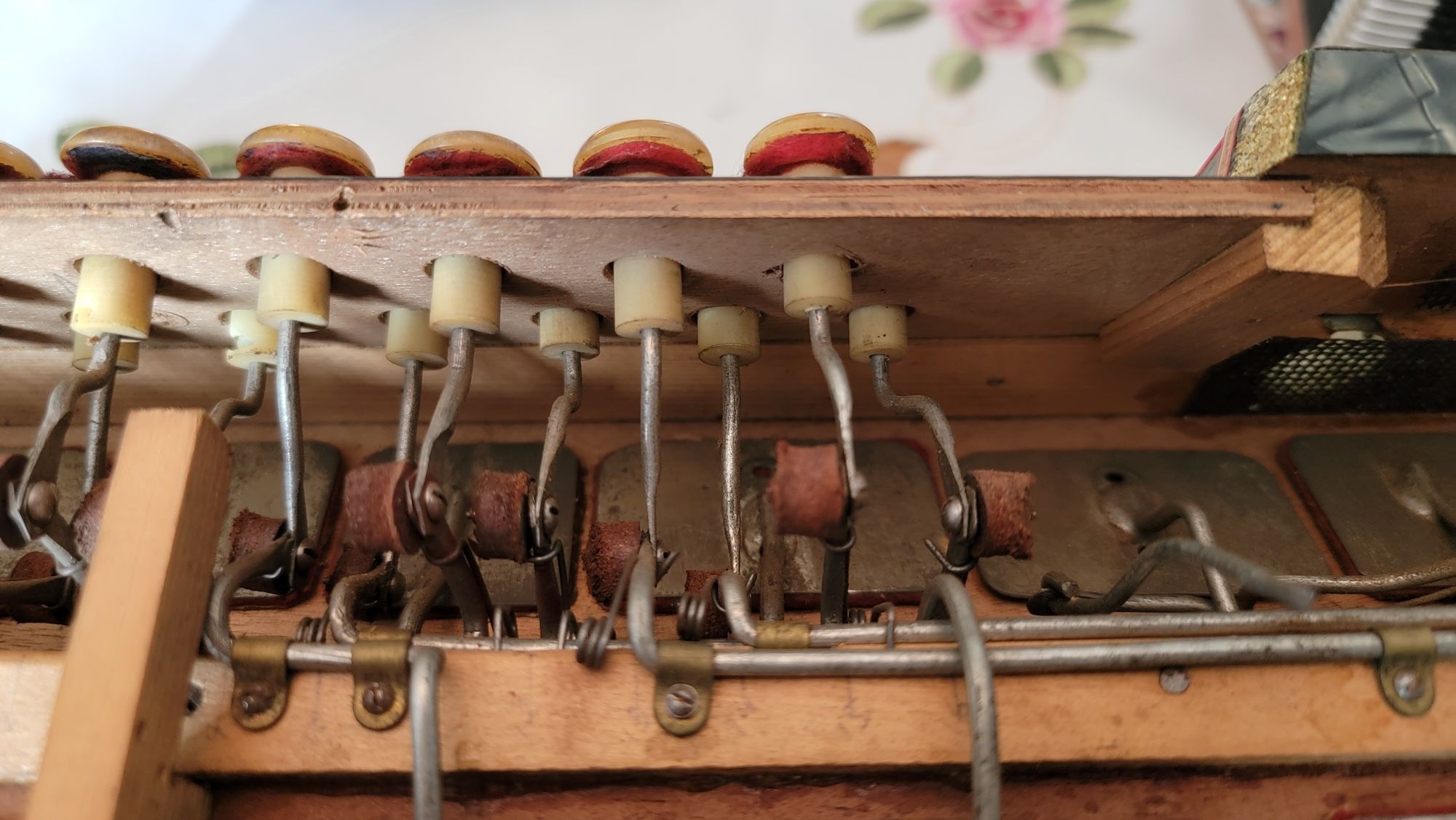
But as is often the case, fixing one issue shows up another one. It was a lot more air-tight so now one reed on the right hand is displaying a bad valve on the treble side and if you pull a touch harder, it sounds off. I don’t have any valves at this time, but I will likely order them later on once I know what kind I need. It would also need a good cleaning… but, it WORKS, and well enough for me to try to later on to map out what notes are where.
The sounds it makes are pretty, not like the cacophony it made a little earlier. I found a pleasant chord on the right hand, found the matching bass and pushed and pulled with a touch of glee as for the first time, I made a little singular chord of music!
This may actually turn out to be fun… more to come later.
On this trip there were way too many things that happened that I could start another blog just talking about all the special things and people there. So, to save some time, let me place them in some form of a vastly shortened bulletin format:
- Paul finally has the Pinnacle of his accordion museum, a Hohner Gola 414… way to go Paul!
- I had the pleasure of meeting and talking a little to the man that worked on Paul’s Gola (Tony), what a SPECIAL kind of guy, and that is meant in the very best of ways!
- Paul is slowly and carefully expanding the museum and including some very old gramophones that play on old 78’s or even wax cylinders… AMAZING quality, volume and the impact it has on one is unimaginable.
- The accordion collections on both the museum and sales sides is nothing short of impressive… there at your finger tips are over 200 years of accordions, all laying bare to your eyes, some like new, others with bellows hanging on to the tips of their fragile and thin lives.
- Though each accordion you see beckons you touch it, pick it up, try to make some noises on it, the ones you really should hold and play are on the “sales” side.
- The experience I lived watching 2 kids walk off the street, be shown how an accordion works and then given an accordion to wear and make noise on… and to watch THE MAGIC of the kids pick up and PLAY 2 simple songs in a matter of a couple of minutes (no exaggeration!) after me showing it to them a couple times, and to see their faces light up, see the concentration and fun of making music on an accordion… this literally humbled me, because I forgot what it meant to know nothing and feel nothing but pure clean fun from wearing an accordion.
My mother of course was there with me, she is my co-pilot and on this trip, she and I spent a lot of time talking about our family, the good, the bad (all families have a ton of both), and we recalled many good stories about my grandfather.
My grandfather and I were not especially close, but we did share a love of music… specifically, accordions. He had absolutely zero musical skills, but he wanted so much to play. In my own collection I own two of his boxes that were passed down to me by his son (my uncle from my mother’s side of the family).
In particular, I recall a nice talk we had one day about his dream instrument, something that he had searched for a long time but since it was very rare in Canada, just had eluded him. I recall how he described it and he then went on to pull out some old cassettes of his and we listened to this accordion… he was talking about a diatonic accordion, one specifically made in the “then” Czechoslovakia in a small factory near Prague. It was called a “Heligonka” due to it’s strong helikon bass and heavy musette tune. He described how once in “the old country” how the nice ones had one "trumpet, and how he almost bought a special one that had two “trumpets” in the bass side, but that the really good ones had the three “trumpets” and how it sounded.
I knew what he was talking about, I was fortunate to have shared a few of these moments with my father while travelling and listening to similar tapes in our van as we travelled and I had seen the pictures in books and later on saw videos on the internet and of course knew the sound from the hundreds of traditional songs the Czechs played and some of the names of the most famous of these people that played these songs both inside and outside our family.
Here is where the story jumps to the present… Paul had in his possession one of those very accordions in his museum, a small personal memory treasure for me… an Anton Hlavāček Heligonka… the REAL thing!




This one looks to be from around the 1930’s and was all there, but needed a lot of work. After getting it home, I can tell that at some time, someone really had a lot of love for this accordion… they gave it modern bellows sstraps, a new (non-original, Italian) bass strap and absolutely new bellows… or at the very least replaced the corners and re-taped it, because they look fresh and new on all 4 sides. However on the bass side, I am willing to bet that some pads fell off as it makes noise without pressing anything when you push some air through it. The bass buttons need adjustment as do some of the treble buttons. But that glorious deep thunder of the helikon bass can be heard when you press a few buttons.
It makes me want to fix this accordion and hear it work properly to it’s aged potential!
Now, here comes the fun part… I cannot play this thing, cannot get a simple tune out of it… I do NOT know where ANY note is on the keyboard and the damn thing changes notes when you push vs pulling (thats the diatonic part in action). This thing is going to drive me a bit nuts, but I would love to learn to play a couple pieces on this accordion… just because… and I will start that research, right after I fix it.
This accordion holds a piece of my past, this is my grandfather’s “Gola”, his epitome of the most wanted accordion he ever saw and wanted to play on because it was the “three trumpet” model, so just to honour his memory, I do plan to fix this one up and make some form of recorded noise on it.
Stay tuned for more as this story goes to the 2nd chapter as I explore the insides of this accordion, and later… as I learn what notes are where and what will be the first tune I get out of it, but for now, this completes this entry.
Addendum May 13, 2024
When you picked up the “little one” and pulled there was instantly noise coming from the bass side. I could not help myself, I had to open it up and look. I knew that I would have to open the cover under the left hand strap, but I wanted to take a look inside. In my head, there was only one reason that was happening.I will say it again… someone at some time loved this accordion and spent some time with it. The leathers looked like they were fairly new. A few were slightly droopy, but less than perhaps 4-5. The reeds were of a design I have never seen before, but someone lovingly spent some time tuning it. Looking at the reeds, they show a dark blue top, dark blue along the flat length on many. Am I looking at hand-made reeds?


Opening the bass cover, the issue was almost instantly obvious and confirmed my very uneducated guess… a couple of the pads had come loose and fallen off.


A few minutes and I had them back in place where they belonged. I let it sit for about 30 minutes then gave it a fast test… no more noise from the bass side!


But as is often the case, fixing one issue shows up another one. It was a lot more air-tight so now one reed on the right hand is displaying a bad valve on the treble side and if you pull a touch harder, it sounds off. I don’t have any valves at this time, but I will likely order them later on once I know what kind I need. It would also need a good cleaning… but, it WORKS, and well enough for me to try to later on to map out what notes are where.
The sounds it makes are pretty, not like the cacophony it made a little earlier. I found a pleasant chord on the right hand, found the matching bass and pushed and pulled with a touch of glee as for the first time, I made a little singular chord of music!
This may actually turn out to be fun… more to come later.
